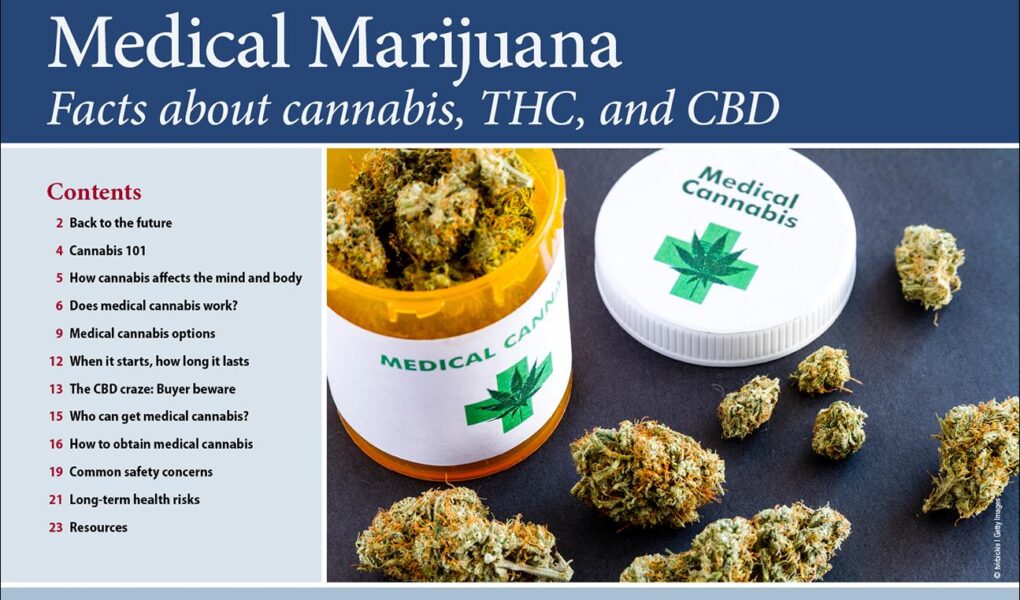In recent years, marijuana has transcended the boundaries of taboo and entered the mainstream conversation about health and wellness. As legalization spreads across various regions and the stigma surrounding its use diminishes, curiosity about its potential benefits and risks has surged. This multifaceted plant, often overshadowed by its controversial past, holds a wealth of information that can illuminate both its therapeutic properties and the nuances of its effects on the human body. In this article, we delve into the health facts of marijuana, exploring the scientific evidence behind its medicinal benefits, the complexities of its psychoactive components, and the ongoing debates that surround its use. Join us as we unravel the intricate tapestry of marijuana’s impact on health, aiming to provide a balanced perspective grounded in research and informed discussion.
Table of Contents
- Understanding the Therapeutic Potential of Marijuana in Medical Use
- Exploring the Psychological Effects: Benefits and Risks
- Navigating Legal and Social Implications Surrounding Marijuana Consumption
- Best Practices for Safe Use and Responsible Choices in Cannabis Use
- Q&A
- In Conclusion
Understanding the Therapeutic Potential of Marijuana in Medical Use
Marijuana, often stigmatized, has emerged as a significant player in the realm of medical treatment, offering a variety of therapeutic benefits that are increasingly recognized by healthcare professionals. The primary active compounds in marijuana, known as cannabinoids, interact with the body’s endocannabinoid system, which plays a crucial role in regulating various physiological processes. Some of the potential benefits include:
- Pain relief: Many patients report reduced chronic pain levels when using marijuana, particularly for conditions like arthritis and neuropathy.
- Anxiety reduction: Certain strains of marijuana can alleviate anxiety symptoms, aiding those with conditions like PTSD.
- Appetite stimulation: Cannabis is well-known for increasing appetite, assisting patients undergoing treatments such as chemotherapy.
- Seizure reduction: There is promising research indicating that marijuana can effectively reduce the frequency and severity of seizures in certain types of epilepsy.
The therapeutic use of marijuana is not without its challenges, including varying legal regulations and the need for more extensive research to fully understand its effects. Nonetheless, clinical studies and patient testimonials have spurred a growing interest in its medical applications. As legislation evolves, more healthcare providers are considering the integration of cannabis into treatment plans. An overview of common ailments treated with medical marijuana is illustrated in the table below:
| Ailment | Treatment Benefits |
|---|---|
| Chronic Pain | Pain management and relief |
| Epilepsy | Reduction in seizure frequency |
| PTSD | Decreased anxiety and improved sleep |
| Appetite Loss | Stimulated hunger and weight gain |
Exploring the Psychological Effects: Benefits and Risks
Marijuana usage has sparked much debate among mental health professionals regarding its psychological benefits. Many users report an increase in feelings of relaxation and euphoria, often attributing these effects to the cannabinoid compounds in the plant, particularly THC. Research supports claims that marijuana can alleviate symptoms associated with anxiety and depression, creating a sense of calm for those who struggle with these conditions. Additionally, it has been noted that some strains may enhance creativity and provide new avenues of thought, leading to innovative ideas and solutions. However, these positive attributes are often accompanied by potential drawbacks.
On the flip side, regular marijuana use may yield psychological risks that are equally noteworthy. These include the potential for developing cognitive impairments, where users experience issues with memory and concentration, especially in adolescents whose brains are still developing. Moreover, heavy use can lead to dependency, which may result in withdrawal symptoms such as irritability and anxiety when not using the substance. The following table summarizes the benefits and risks associated with marijuana consumption:
| Benefits | Risks |
|---|---|
| Reduced anxiety and stress | Cognitive impairment |
| Enhanced mood | Dependency potential |
| Promotion of creativity | Withdrawal symptoms |
Navigating Legal and Social Implications Surrounding Marijuana Consumption
As the legalization of marijuana continues to gain traction globally, the shifting legal landscape presents both challenges and opportunities. Individuals navigating this new terrain must stay informed about local laws, which can significantly differ from one jurisdiction to another. For instance, some regions allow recreational use, while others may strictly regulate medical use. It is paramount to grasp the following crucial points:
- Regulatory Compliance: Understanding possession limits, acceptable consumption locations, and the legal repercussions of violations.
- Employment Policies: Knowing workplace regulations regarding marijuana usage and potential impact on employment status.
- Public Perception: Being aware of the social stigma that may still exist, affecting interpersonal relationships and community engagement.
The social implications of marijuana consumption also resonate deeply within communities, influencing public health discussions and law enforcement practices. Conversations about responsible consumption and education regarding risks and benefits play a critical role in shaping societal attitudes. Key considerations include:
| Your Role | Key Responsibility |
|---|---|
| Consumers | Educate themselves on safe usage and potential health effects. |
| Legislators | Craft laws that protect public health while acknowledging personal freedoms. |
| Health Professionals | Provide evidence-based insights into the benefits and risks associated with use. |
Best Practices for Safe Use and Responsible Choices in Cannabis Use
When engaging with cannabis, it is essential to prioritize safety and responsibility to ensure a positive experience. Here are some best practices to keep in mind:
- Educate Yourself: Understand the strains, methods of consumption, and effects of cannabis. Research local laws and regulations surrounding its use.
- Start Slow: If you are new to cannabis, begin with a low dosage and gradually increase as needed. This approach can help mitigate unwanted side effects.
- Be Mindful of Setting: Use cannabis in a comfortable environment with trusted company to enhance your experience and ensure safety.
- Avoid Mixing Substances: Consuming cannabis with other substances, particularly alcohol, can amplify effects and lead to unpredictable outcomes.
Moreover, practicing moderation is crucial to maintaining a healthy relationship with cannabis. Utilize tools such as a consumption journal to track your experiences, and consider the following tips:
| Tip | Description |
|---|---|
| Know Your Limits | Recognize how cannabis affects you personally to avoid overconsumption. |
| Stay Hydrated | Drink water to help reduce dehydration effects commonly associated with cannabis. |
| Consult Professionals | Seek guidance from healthcare providers if you have medical conditions or take other medications. |
Q&A
Q&A: Unraveling the Health Facts of Marijuana
Q1: What are the primary health benefits associated with marijuana use?
A1: Marijuana has been linked to various health benefits, primarily due to its active compounds, cannabinoids. These compounds, particularly THC and CBD, may help alleviate chronic pain, reduce inflammation, ease nausea from chemotherapy, and stimulate appetite in individuals with conditions like HIV/AIDS. Additionally, some studies suggest it may help improve sleep and reduce anxiety for certain users.
Q2: Are there any risks or side effects of using marijuana?
A2: Yes, while marijuana can offer therapeutic benefits, it is not without its risks. Possible side effects include impaired short-term memory, altered judgment, and coordination issues, which can increase the risk of accidents. Long-term use may also lead to respiratory issues if smoked and can exacerbate mental health problems in susceptible individuals, potentially triggering anxiety or paranoia.
Q3: How does marijuana affect mental health?
A3: The impact of marijuana on mental health can vary widely among individuals. For some, it may provide relief from anxiety or depression. However, for others, particularly those predisposed to mental health disorders, using marijuana—especially strains high in THC—could increase the risk of developing issues such as psychosis or exacerbating existing conditions.
Q4: Is marijuana addictive?
A4: Marijuana can lead to dependence, though its addictive potential is lower compared to substances like alcohol or opioids. Research indicates that about 9% of users may develop a dependence, and that number increases for those who start using in their teens. Withdrawal symptoms—though generally milder—can include irritability, sleep disturbances, and cravings.
Q5: Does marijuana have any medical applications?
A5: Absolutely. Medical marijuana is used to treat various conditions, including epilepsy (especially certain rare forms), multiple sclerosis, and glaucoma. Synthetic cannabinoids, like Marinol, are also prescribed to stimulate appetite and prevent nausea in chemotherapy patients. The ongoing research continues to uncover potential medicinal applications, making it a valuable area of study.
Q6: What is the difference between THC and CBD in terms of health effects?
A6: THC (tetrahydrocannabinol) is primarily known for its psychoactive effects, causing the “high” sensation users experience. It can be effective for pain relief, appetite stimulation, and reducing nausea. CBD (cannabidiol), on the other hand, does not produce a high and is praised for its potential anti-inflammatory, anxiolytic, and neuroprotective properties. This makes CBD a popular choice for individuals seeking relief from pain or anxiety without the psychoactive effects of THC.
Q7: How does marijuana use differ between smoking and other consumption methods?
A7: The method of consumption can significantly affect the health implications of marijuana use. Smoking can lead to respiratory issues similar to those caused by tobacco, while vaping and edibles can mitigate some respiratory risks. However, edibles often result in delayed effects, leading to a higher likelihood of overconsumption. Each method comes with its own set of benefits and risks, making user education crucial for safe consumption.
Q8: What’s the current legal status of marijuana, and how does it impact health research?
A8: The legal status of marijuana varies globally, influencing health research. In regions where it is legal for recreational or medical use, studies are more prevalent, allowing for a better understanding of its health effects. Conversely, in areas where it remains illegal, research is limited, creating gaps in knowledge about both the benefits and risks of marijuana, which complicates public health messaging.
Q9: What advice should be given to those considering using marijuana for health purposes?
A9: Individuals considering marijuana for health purposes should consult healthcare professionals to weigh potential benefits against risks. It’s essential to consider personal health history, current medications, and individual responses to marijuana. Additionally, starting with low doses and monitoring effects can help users find an appropriate balance while minimizing adverse effects.
Remember, the world of marijuana is vast and ever-evolving, and understanding its health facts requires continuous exploration and an open mind.
In Conclusion
the landscape of marijuana is as complex as the plant itself. As our understanding of its health effects continues to evolve, it becomes increasingly clear that marijuana is not merely a substance to be categorized as “good” or “bad.” Instead, it represents a spectrum of possibilities—one that warrants careful consideration and respectful dialogue. From pain relief to anxiety management, the therapeutic potential is promising, yet it is essential to approach it with caution, acknowledging both the benefits and the risks. As research progresses and societal attitudes shift, we must remain informed and curious, advocating for a future where marijuana is understood in all its dimensions. The journey into the world of cannabis health facts is merely the beginning; the story is still unfolding. Let’s keep the conversation going, paving the way for a nuanced understanding of this extraordinary plant and its place in our lives.


